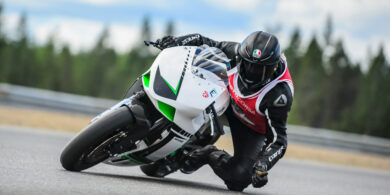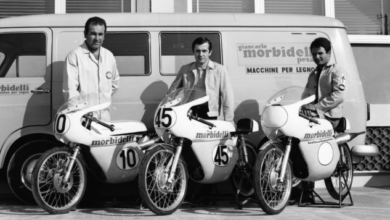OPINION – A scary omen appears at the V-Twin Expo
In most business arenas, the discussion of cost-cutting is a practical endeavor. Although it’s near-universally dreaded, it’s also equally accepted, even anticipated on an annual basis.
But in the V-twin industry, a market that exudes flash and extravagance, it has to be the worst sign. The biggest, baddest omen there is.
And that’s why the mere discussion of lowering MSRPs at the recently held V-Twin Expo signals to the powersports industry that one of its more distinctive segments is in trouble. Not in dire trouble perhaps, but distressing nonetheless.
Case in point: One of the biggest headlines to come out of the V-Twin Expo was American IronHorse’s decision to produce two lower-priced bikes in its upcoming model year. The bikes, which are scheduled to be in the low- to mid-$20,000 range, represent a quantum shift of focus for the Texas manufacturer. Just six months ago at its national dealer show, the company was focusing on its flagship cruiser, which sported a dazzling new look and a price tag that ventured into the $40,000 neighborhood.
The company’s shift in focus could be a bit unsettling because it seemed to occur so quickly. But those uncomfortable feelings can be assuaged by two factors: the company’s change in leadership and an equally dramatic shift in the marketplace.
New IronHorse President R.B. “Buck” Hendrickson seems determined to broaden the company’s customer base by building more affordable bikes to reach a greater number of people. It’s a practical business approach, but one that produces several scary questions about V-twin buyers.
Is the finicky economy putting undue pressure on their discretionary income, leading to a drop in V-twin sales? Or are there simply too many manufacturers building bikes for a pool of consumers that isn’t growing at the same pace as the builders’ lines? Or perhaps the pool is just shrinking because those who don’t mind paying $30,000-plus for new bikes have already purchased one during the past few years?
Since there really is no official tracking of V-twin sales data, it’s hard to say exactly what is happening to that market’s consumer.
Either way, the overwhelming belief in the industry is the inventory is much too dirty, pointing to a scary future. Heavy inventories are especially distressing in the V-twin industry, where consumers oftentimes buy for the look of the bike rather than new technology that a newer model year might possess.
As a result, V-twin manufacturers that had goals of surging sales just a year ago were infinitely more conservative with their 2007 sales forecasts in discussions at this year’s Expo. Some merely hoped to maintain year-over-year sales.
With the current inventory overload, it’s hard to believe most companies will even be able to attain that without some dramatic shift in the economy. As that’s unlikely, it won’t be surprising to see some of the V-twin industry suffer through what the snowmobile industry faced last year: deep cost-cutting and painful layoffs.
Manufacturers like IronHorse are trying hard to delay those moves by attempting to expand the consumer pool by reducing costs and ultimately their MSRP.
It’s a smart move and a necessary one if you want to keep your board of directors happy and more important, keep your business growing.
But is it one that will ultimately lead to any real significance, or is the market inventory saturation just too much to overcome? I’m leaning toward the latter, especially when you consider less than 10 percent of the bike buying population is spending more than $20,000 on new bikes, according to the 2006 J.D. Power & Associates’ annual customer satisfaction survey. And that small percentage is dwindling, according to the latest J.D. Power & Associates survey that you’ll read about in the coming issues of Powersports Business.
The efforts by IronHorse certainly should be applauded. But the painful truth is even the mere discussion of price points is a sign of just how bad things have become, and could get, in the V-twin industry. psb
Neil Pascale is editor of Powersports Business. He can be reached at npascale@ehlertpublishing.com.




